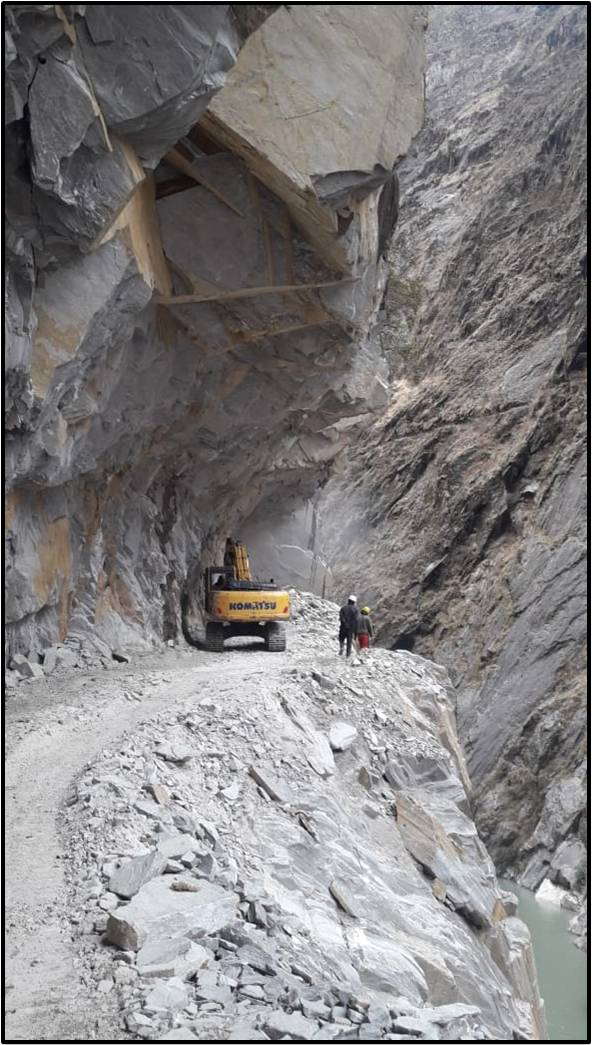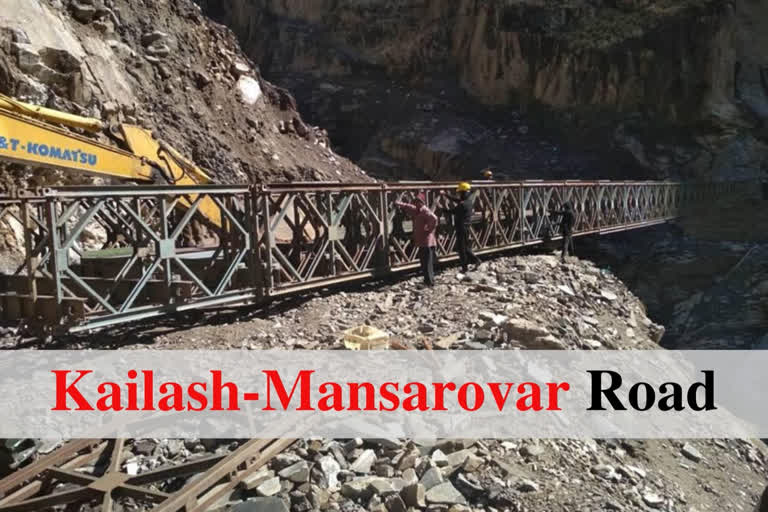New Delhi: If it was only about numbers, a dizzyingly dangerous 3 km stretch of road construction in the high Himalayas in Uttarakhand would make for astounding reading.
And if ‘Shramena Sarvam Sadhyam’ (‘everything can be achieved with hard work’) is the motto of the Indian Army’s Border Roads Organisation (BRO), nothing can perhaps illustrate the spirit better than the connectivity achieved by the 80 km long Kailash-Mansarovar Yatra (KMY) Road which saw near completion last week.

Part of the KMY road, work on the strategically crucial road began in 2008 from a place called Ghatiabagarh in Uttarakhand.
Till 2018, only a 3 km stretch had been built by the BRO while at least a hundred lives were lost in accidents.
All the while, the road cutting progressed at the rate of a shocking less than 3 metres a day, discounting the fact that work could take place only for five months in a year due to cold, snow, inclement weather conditions, flash floods and cloud bursts.
Read: Gadkari lauds BRO for completing Kailash Mansarovar highway project
In the years till now, about a hundred lives and dozens of heavy and expensive equipment fell into the Kali river roaring by much below.
“While we started building the road in bits and pieces from the other end and in the middle, the starting 3 km stretch is by far one of the most difficult road stretches in the country. We had to cut through the hard rock of the Himalayas, and most of the time the slope was near vertical at about 75-80 degrees,” Vimal Goswami, chief engineer of the BRO’s ‘Hirak’ road project told ETV Bharat.
“And every year, at least six people would die in accidents. About a hundred must have perished,” he added.
Goswami’s numbers may be an understatement if one goes by figures given by the Comptroller and Auditor General (CAG) in a 2017 report.
Dwelling on the very difficult working conditions, the CAG report said, “The death of 21 GREF officers/personnel and 48 casual paid labourers deployed in ICBR (Indo China Border Roads) works from April 2012 to March 2016 in military transport accident/work site accidents clearly indicate the tough and hazardous working conditions.”
A civilian force, the GREF (General Reserve Engineering Force) is the parent cadre of the BRO which is under the defence ministry.
Read: BRO constructs tunnels through Sela Pass to cut down distance to China border
The KMY road is considered vital for various reasons. While it will ease pilgrimage to the holy Kailash mountain and the Mansarovar lake in China’s Tibet Autonomous Region (TAR), it will facilitate much faster military movement and deployment in the forward areas to the border with China.
But importantly, it will establish connectivity to the region in terms of coverage in infrastructure like electricity, mobile telephony, push government developmental initiatives and curb the depopulation of the border areas which is a growing concern in the government.
The entire KMY road is connected to Pithoragarh. The about 80 km long KMY road begins at Ghatiabagarh and links up to near the Lipulekh pass which is considered the gateway to Kailash Mansarovar.
During this 80 km stretch, the altitude rises from 6,000 feet to 17,060 feet.
Till 2007, India consciously followed a policy of not developing the borders with China so as to create a buffer area. That is the reason why China has built roads right up to the Line of Actual Control (LAC), or the effective Indo-China border, while most Indian road-heads peter off at least about 50 km to 70 km from the LAC.
At present, the government is following a policy of constructing 73 strategically important roads to facilitate the brisk movement of troops in case of any aggression along the Northern and Eastern frontiers.
Also Read: Uttarakhand: Uncertainty prevails over Mansarovar Yatra amid lockdown



